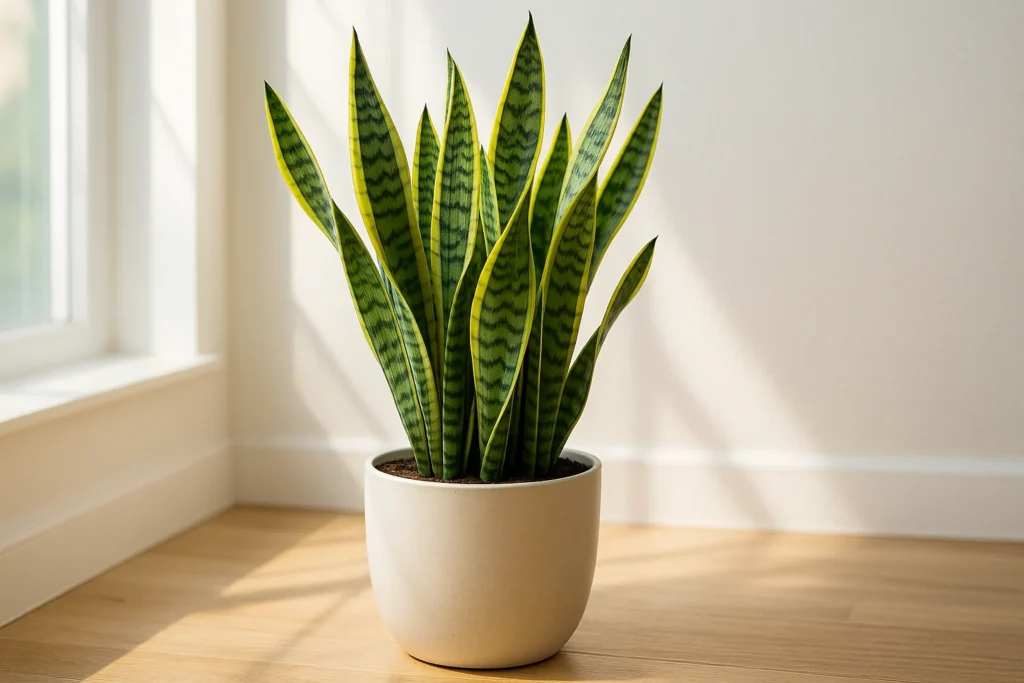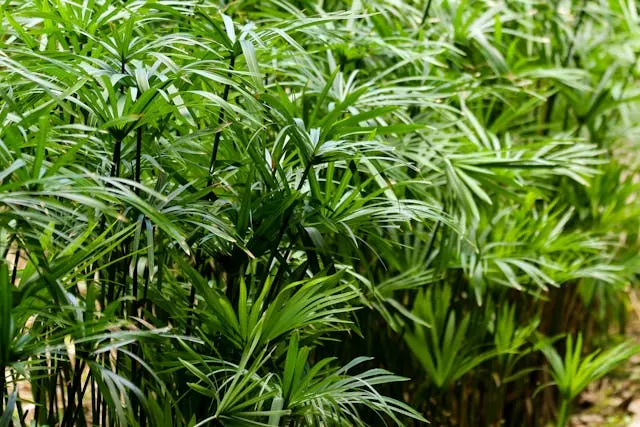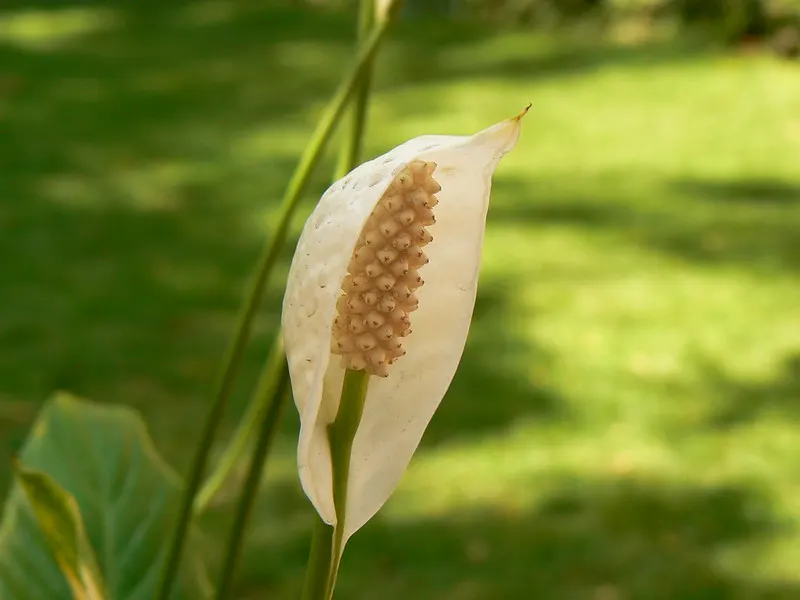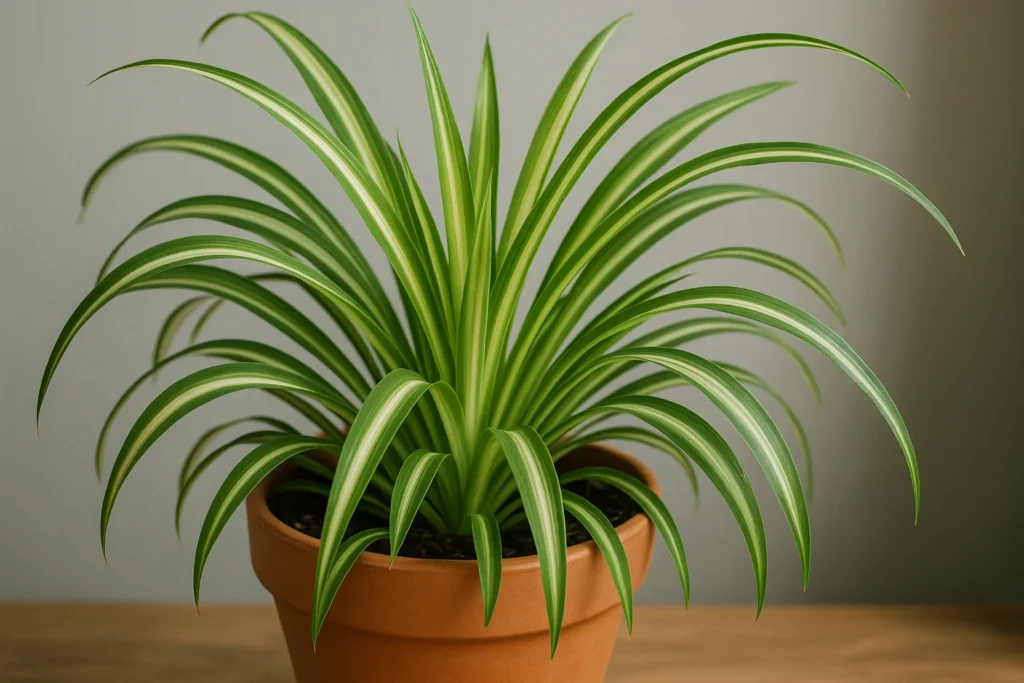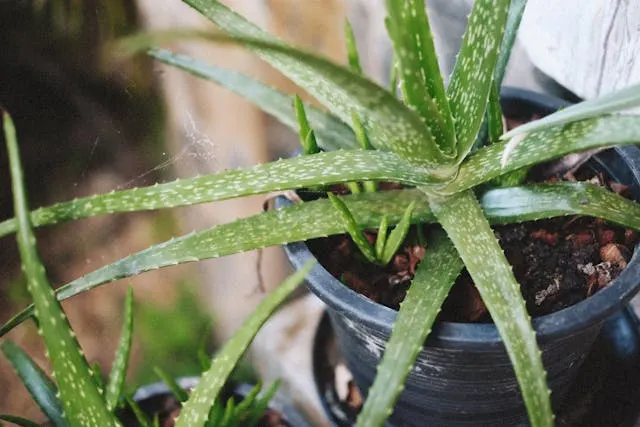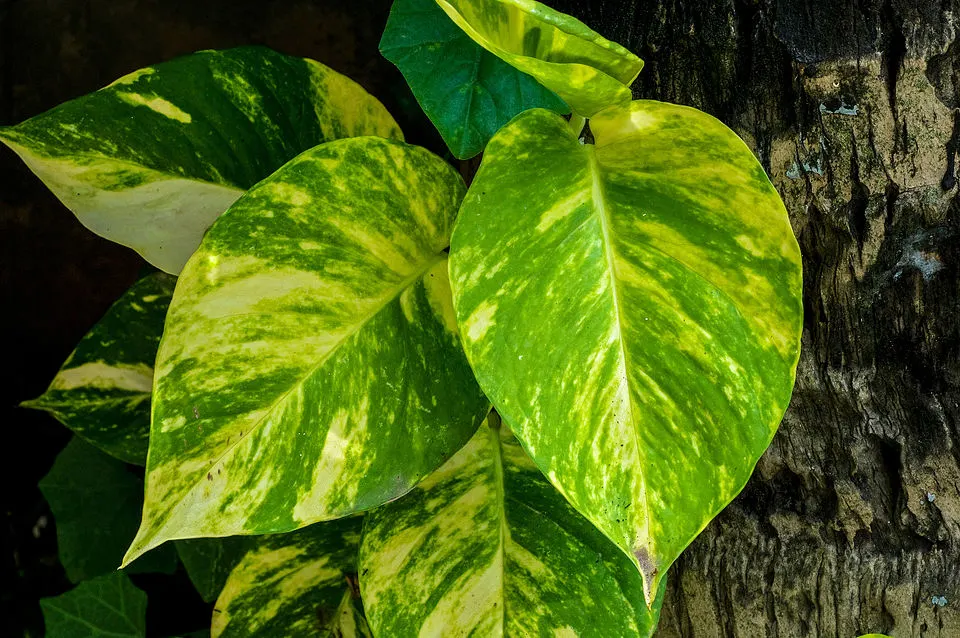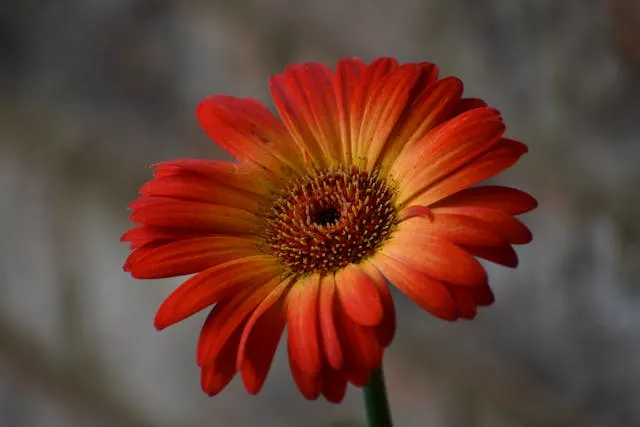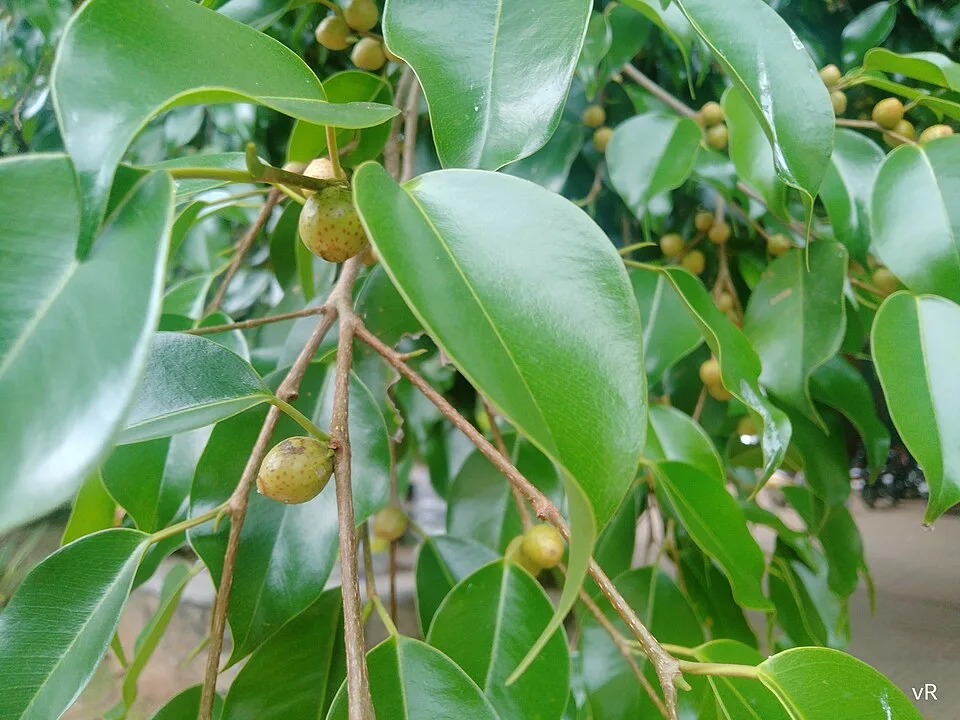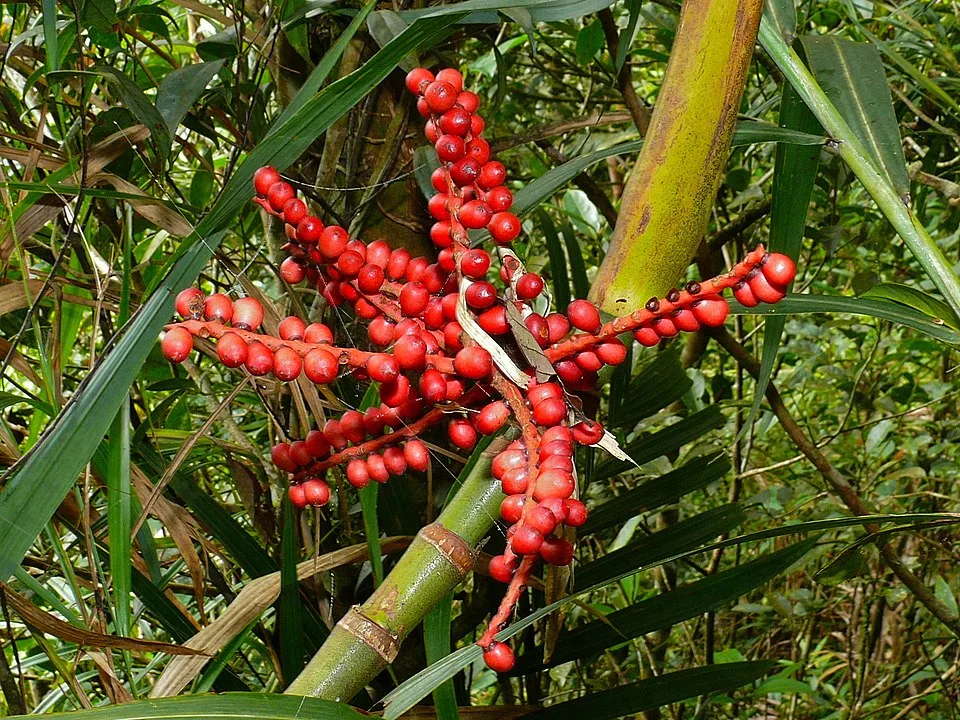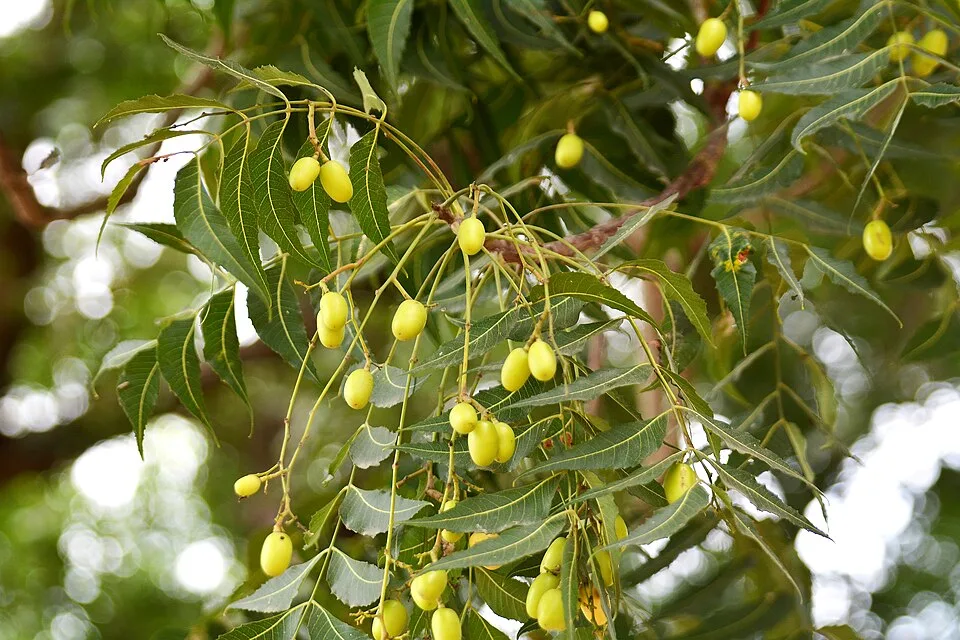10 Best Indoor Plants for Oxygen

Not all houseplants are created equal—especially when it comes to the air you breathe. If you’re looking for the best indoor plants for oxygen, the goal is simple: bring in greenery that doesn’t just sit pretty but actively improves your indoor air quality. Some plants quietly work all day (and night) pulling in carbon dioxide and releasing oxygen, making your space fresher, healthier, and easier to breathe in.
Indoor air can get stale fast—especially in colder climates where windows stay shut. That’s where oxygen-producing plants come in. A few species do this better than others, and they don’t need fancy setups or perfect conditions to thrive. These aren’t miracle fixes, but with the right mix of plants and care, you’ll notice a real difference over time.
In this guide, we’ll walk through the best indoor plants for oxygen, explain what makes certain plants more effective, and answer the questions most people miss—like how much oxygen a plant actually produces, and whether plants absorb oxygen at night. You’ll also find suggestions for plants that may help with sleep, and tools to figure out what will thrive in your exact space.
Table of Contents
Best Indoor Plants for Oxygen
1. Snake Plant (Sansevieria trifasciata)
Also known as mother-in-law’s tongue, the snake plant is one of the best indoor plants for oxygen—and one of the few that releases oxygen even at night. This is thanks to a process called CAM photosynthesis, which allows it to store carbon dioxide during the day and convert it to oxygen while you sleep.
The upright, sword-like leaves are tough, drought-tolerant, and nearly impossible to kill, which makes the snake plant ideal for beginners or anyone who wants low-maintenance air improvement. It’s a slow grower, but its ability to release oxygen 24 hours a day gives it a big edge over fussier houseplants.
Why it’s great for oxygen:
It’s efficient, consistent, and works around the clock. The snake plant has been included in multiple studies—including NASA’s Clean Air Study—for its potential to filter indoor air and contribute to better oxygen levels.
Care Level: Extremely easy
Light Needs: Low to bright indirect light
Water Needs: Every 2–3 weeks (let the soil dry completely)
Pet Safe: No – mildly toxic to pets if ingested
🧪 Bonus tip: Pair this plant with a pothos or peace lily to balance oxygen production with humidity regulation indoors.
This is hands-down one of the best indoor plants for oxygen, especially in bedrooms or low-light spaces where continuous air refresh is needed.
2. Areca Palm (Dypsis lutescens)
The Areca Palm, sometimes called butterfly palm or golden cane palm, is a tropical favorite that earns its place as one of the best indoor plants for oxygen. It doesn’t just sit there—it actively pumps moisture and oxygen into the air while softening the look of any corner with its feathery, arching fronds.
This plant is a natural humidifier, which makes it especially helpful during winter months or in dry homes with forced air heat. While it requires a bit more attention than a snake plant, it pays off by being both beautiful and functional. It’s also safe for pets, which can’t be said for many indoor plants.
Why it’s great for oxygen:
The Areca Palm has a high rate of transpiration, which boosts humidity while also producing generous amounts of oxygen during daylight hours. It’s been used in indoor air quality experiments for this very reason.
Care Level: Moderate (some humidity required)
Light Needs: Bright, indirect light
Water Needs: Keep soil consistently moist but not soggy
Pet Safe: Yes – non-toxic to cats and dogs
🪴 Care tip: Wipe down the fronds monthly to remove dust and keep photosynthesis running efficiently.
If you’re aiming to improve both oxygen levels and humidity in your space, the Areca Palm is one of the best indoor plants for oxygen you can bring home.
3. Peace Lily (Spathiphyllum wallisii)
The peace lily blends elegant form with real function. Known for its glossy green leaves and distinctive white blooms, this tropical plant is not just visually calming—it’s also one of the best indoor plants for oxygen and air purification. It’s been a staple in homes and offices for decades, and for good reason.
Peace lilies are efficient at removing toxins like benzene and formaldehyde from the air. And while they don’t release oxygen at night like the snake plant, they more than make up for it during the day with steady, high-output photosynthesis—especially when placed in bright, indirect light.
Why it’s great for oxygen:
Peace lilies have large leaves and a strong transpiration rate, both of which contribute to better indoor oxygen levels. They’re also featured in the original NASA Clean Air Study, proving their practical value in sealed environments.
Care Level: Moderate
Light Needs: Bright, indirect light (blooms best here)
Water Needs: Weekly or when soil is dry an inch down
Pet Safe: No – toxic if ingested by cats or dogs
💧 Quick note: Peace lilies will droop dramatically when they need water—then perk up a few hours after a good soak. It’s an easy built-in watering reminder.
When you’re aiming to strike a balance between beauty and clean air, the peace lily stands out as one of the best indoor plants for oxygen, especially in living rooms and shared spaces.
4. Spider Plant (Chlorophytum comosum)
Few houseplants are as forgiving—or as fast-growing—as the spider plant. Its arching green-and-white striped leaves spill gracefully from hanging baskets or pots, and it’s constantly putting out “babies,” or offshoots, that you can propagate with ease. But beyond the aesthetics, it’s one of the best indoor plants for oxygen, particularly in high-traffic areas or homes with kids and pets.
Spider plants are known for their ability to adapt to different environments. They’re also one of the most studied plants when it comes to removing indoor air pollutants like carbon monoxide, formaldehyde, and xylene—all while producing a consistent oxygen output.
Why it’s great for oxygen:
The spider plant’s rapid growth and high leaf surface area contribute to above-average oxygen production. It’s also highly effective at absorbing airborne toxins, making your indoor air cleaner overall.
Care Level: Very easy
Light Needs: Bright, indirect light (but can tolerate low light)
Water Needs: Water when the top 1–2 inches of soil are dry
Pet Safe: Yes – non-toxic to pets
🌿 Propagation tip: Place plantlets in water or moist soil until roots form—great for sharing with friends or expanding your oxygen coverage indoors.
With its no-fuss nature and proven air-cleaning benefits, the spider plant earns its spot among the best indoor plants for oxygen, especially in kitchens, bathrooms, or office nooks.
5. Aloe Vera (Aloe barbadensis miller)
Most people know aloe vera for its soothing gel, but what’s often overlooked is its role as one of the best indoor plants for oxygen. This succulent stores water in its thick, spiky leaves and performs photosynthesis with incredible efficiency. Thanks to its use of CAM photosynthesis, aloe vera releases oxygen at night—making it a smart addition to bedrooms or quiet corners of your home.
It thrives in dry conditions, doesn’t mind being forgotten for a week or two, and even doubles as a skin soother for burns or cuts. If you’re looking for a low-maintenance plant that punches above its weight, this is it.
Why it’s great for oxygen:
Aloe vera is one of the few plants that emits oxygen overnight. Its slow but steady oxygen production makes it ideal for places where you sleep, work, or rest. It’s also been shown to remove harmful VOCs (volatile organic compounds) from the air.
Care Level: Easy
Light Needs: Bright, direct light (a sunny windowsill is best)
Water Needs: Every 2–3 weeks; let soil dry out completely
Pet Safe: No – mildly toxic to pets
🌞 Placement tip: Aloe vera thrives on south- or west-facing windowsills where it can soak up hours of sunlight each day.
With its night-time oxygen release and dual purpose as a natural remedy, aloe vera earns a clear place among the best indoor plants for oxygen—especially for sleep and wellness-focused spaces.
6. Money Plant (Epipremnum aureum / Pothos)
Commonly known as pothos or the money plant, this trailing vine is one of the easiest houseplants to grow—and one of the most efficient when it comes to oxygen production. Native to Southeast Asia, its heart-shaped leaves come in various shades of green, sometimes marbled with yellow or white. It grows fast, adapts to different conditions, and doesn’t ask for much—making it one of the best indoor plants for oxygen in any home.
Pothos doesn’t just look good on a shelf or trailing down from a hanging basket. It’s been noted in several indoor air quality studies for its ability to absorb toxins like benzene, formaldehyde, and xylene, all while contributing to fresher air through consistent oxygen output.
Why it’s great for oxygen:
Thanks to its fast growth and large leaf surface area, pothos releases a steady stream of oxygen throughout the day. While it doesn’t use CAM photosynthesis, its high metabolic activity makes it effective in living rooms, kitchens, or office spaces.
Care Level: Very easy
Light Needs: Low to bright, indirect light
Water Needs: Once a week or when soil feels dry
Pet Safe: No – toxic if ingested by pets
🍃 Style tip: Wrap the vines around a trellis or stake to create a vertical green column that’s both decorative and oxygen-boosting.
If you’re after something that’s fast-growing, low-maintenance, and proven to improve air quality, pothos stands strong among the best indoor plants for oxygen—especially for new plant owners.
7. Gerbera Daisy (Gerbera jamesonii)
You might not expect a flowering plant like the gerbera daisy to show up on a list of the best indoor plants for oxygen, but this colorful favorite isn’t just here for looks. It’s one of the few flowering houseplants known to produce oxygen at night, which makes it a smart option for bedrooms and nurseries.
Native to South Africa, gerbera daisies thrive in warm, bright spaces and reward you with bold blooms in pink, orange, yellow, or red. But beneath the petals, it’s working hard—pulling carbon dioxide out of the air and releasing oxygen, even after sunset.
Why it’s great for oxygen:
Like aloe vera and snake plant, gerbera daisy uses CAM photosynthesis, which means it continues oxygen production during the nighttime hours. This can help support better sleep and fresher air, especially in enclosed or poorly ventilated rooms.
Care Level: Moderate (needs more light and attention than most)
Light Needs: Bright, direct light—ideally near a sunny window
Water Needs: Keep soil evenly moist; don’t let it get soggy
Pet Safe: Yes – non-toxic to pets
🌼 Note: While it’s not as low-maintenance as a pothos or spider plant, the nighttime oxygen output makes gerbera daisies a great choice for sleep-supportive plant setups.
With its oxygen-boosting abilities and uplifting blooms, the gerbera daisy holds its own as one of the best indoor plants for oxygen—especially where both air quality and aesthetics matter.
8. Weeping Fig (Ficus benjamina)
The weeping fig brings a tree-like presence to indoor spaces. Its graceful, arching branches and glossy green leaves make it a go-to for adding structure and height to a room—but beyond looks, it’s also one of the best indoor plants for oxygen. Given the right conditions, it produces a steady flow of oxygen and helps remove indoor air pollutants like formaldehyde and toluene.
Native to Southeast Asia and Australia, this plant has been part of NASA’s indoor air studies for its ability to filter toxins. It’s more sensitive to change than some of the easier picks on this list, but once it settles, it does the work quietly and reliably.
Why it’s great for oxygen:
With its dense canopy and vigorous growth habit, the weeping fig photosynthesizes at a high rate. Its leaves offer a large surface area for oxygen production, making it a strong contributor to indoor air refresh.
Care Level: Moderate to high (can be finicky)
Light Needs: Bright, indirect light (keep away from drafts)
Water Needs: Water when top inch of soil is dry
Pet Safe: No – toxic to cats and dogs
🌳 Placement tip: Choose a stable, well-lit spot and avoid moving it often. The weeping fig dislikes sudden changes.
For larger living spaces or open-floor homes, the weeping fig is one of the best indoor plants for oxygen when you’re ready for something a bit more mature and sculptural.
9. Bamboo Palm (Chamaedorea seifrizii)
The bamboo palm is a quiet overachiever. With its slender, reed-like stems and soft, feathery fronds, it brings a tropical feel indoors without demanding too much in return. But what makes it one of the best indoor plants for oxygen is its ability to release moisture, trap airborne toxins, and supply steady oxygen—especially in dry or drafty rooms.
This plant grows slowly but steadily, reaching a few feet tall in a pot over time. It’s also on NASA’s list of top air-purifying plants and is especially helpful in improving humidity alongside oxygen levels.
Why it’s great for oxygen:
Its constant transpiration rate and broad leaf structure make it effective at releasing oxygen and improving overall air quality in closed environments.
Care Level: Easy to moderate
Light Needs: Indirect to filtered sunlight
Water Needs: Water when the top inch of soil is dry; don’t overwater
Pet Safe: Yes – non-toxic to pets
🌿 Pro tip: Rotate the plant every few weeks to keep it growing evenly and avoid leaning toward the light.
For homes with dry air or limited ventilation, the bamboo palm stands out as one of the best indoor plants for oxygen with added benefits for comfort and climate.
10. Neem Tree (Azadirachta indica)
A less common—but highly effective—option, the neem tree is often overlooked in Western homes. Native to India, this hardy tree has been used for centuries in Ayurvedic medicine and is now gaining popularity for its indoor air benefits. It’s a powerhouse oxygen producer and a natural insect repellent rolled into one.
Though it prefers warm, sunny conditions, the neem tree can adapt to indoor life if given enough light and space. Its sturdy leaves stay green year-round and require minimal fuss once established.
Why it’s great for oxygen:
Neem trees have a high leaf surface area and produce oxygen continuously throughout the day. They also help purify air by reducing microbial activity and absorbing common VOCs.
Care Level: Moderate (requires warmth and sun)
Light Needs: Full sun or very bright indirect light
Water Needs: Moderate; let the top soil dry between watering
Pet Safe: No – leaves and seeds are toxic if ingested
🌱 Bonus benefit: Acts as a natural pest deterrent—especially for fruit flies and indoor gnats.
If you’re looking to try something a little different, the neem tree offers a powerful mix of oxygen production and indoor resilience, securing its spot among the best indoor plants for oxygen.
For more details, check out this scientific study on the air-cleaning effects of indoor plants published by ScienceDirect.
Plants That Help You Sleep
If your bedroom air feels stuffy or dry, adding the right plant can make a real difference. While all houseplants perform photosynthesis, only a few continue releasing oxygen at night—and those are the ones that may support deeper, uninterrupted sleep. We’ve already covered some of the best indoor plants for oxygen, and several of them double as natural sleep aids.
Here are three top performers for nighttime air quality:
Snake Plant
Releases oxygen overnight using CAM photosynthesis. It’s incredibly hardy and thrives in dark corners, making it perfect for bedside tables.
Aloe Vera
Another CAM plant that gives off oxygen while you sleep. Place it on a windowsill where it can catch sunlight during the day, and enjoy its cooling benefits at night.
Gerbera Daisy
This cheerful plant isn’t just decorative—it’s one of the few flowering species that produces oxygen after dark. Just make sure it gets plenty of light during the day to stay healthy.
💤 Quick tip: Avoid overwatering plants in the bedroom—damp soil can encourage mold growth, which may impact sleep quality.
Bringing in any of these options can help create a more restful environment. And since they’re also among the best indoor plants for oxygen, you’re getting double the benefit: cleaner air and deeper rest.
How Do Plants Produce Oxygen?
Understanding how plants make oxygen helps explain why some are better than others indoors. All the best indoor plants for oxygen rely on the same basic process: photosynthesis. This is where plants absorb carbon dioxide (CO₂) from the air and water (H₂O) from the soil, then use light—usually sunlight—to convert them into glucose and oxygen (O₂).
The oxygen is released into the air through tiny pores on the leaves called stomata. In well-lit environments, this process runs continuously during the day, refreshing your air naturally.
🌞 Photosynthesis Formula:
CO₂ + H₂O + light → O₂ + glucose
Some plants, like snake plant and aloe vera, use a variant called CAM photosynthesis, which allows them to release oxygen at night as well—making them especially useful in bedrooms or rooms with limited ventilation.
Do Plants Absorb Oxygen from the Atmosphere?
Yes—plants do absorb oxygen, but mostly at night. This is part of their cellular respiration, when they “burn” stored sugars for energy, just like animals. However, the amount of oxygen they consume is minimal compared to what they release during the day.
That’s why even at night, the best indoor plants for oxygen don’t reduce your oxygen levels—they usually make the air better, not worse.
Which Plant Gives Oxygen 24 Hours a Day?
Most houseplants release oxygen only during daylight hours, when they can photosynthesize. But a select group of plants use Crassulacean Acid Metabolism (CAM)—a special type of photosynthesis that allows them to release oxygen at night. These are the real MVPs for bedrooms, small apartments, and low-ventilation spaces.
Here are the top CAM plants that give off oxygen 24 hours a day:
1. Snake Plant (Sansevieria trifasciata)
The most popular night-time oxygen producer. It’s low maintenance, thrives in low light, and keeps releasing oxygen even when the lights are off.
2. Aloe Vera
Besides its medicinal uses, aloe vera also emits oxygen at night, making it ideal for windowsills in bedrooms or bathrooms.
3. Gerbera Daisy
This vibrant flowering plant gives off oxygen while you sleep, although it does need strong daylight to stay healthy and active at night.
These three are not just beautiful and practical—they’re among the best indoor plants for oxygen precisely because they don’t stop working when the sun goes down.
🛏️ Tip: Pair a night oxygenating plant with a good airflow setup (like a cracked window or door) for maximum benefit.
How Much Oxygen Does a Plant Produce?
A single mature indoor plant typically produces 5 to 10 milliliters of oxygen per hour during photosynthesis. To make a noticeable difference in air quality, you would need 10 to 20 healthy houseplants in an average-sized room.
The best indoor plants for oxygen—like snake plant, pothos, and areca palm—release higher amounts due to their large leaf surface area and high photosynthetic efficiency. While plants alone can’t replace mechanical ventilation, they contribute to fresher air when combined with good airflow and lighting.
🪴 Tip: Group oxygen-producing plants near windows or light sources to maximize their impact.listic indoor air strategy, they pull their weight—and they do it quietly, with style.
What Produces the Most Oxygen on Earth?
Phytoplankton in oceans produce over 50% of the Earth’s oxygen supply. These microscopic organisms live near the water’s surface and generate oxygen through photosynthesis, just like plants do on land.
While the best indoor plants for oxygen improve air quality in your home, globally, it’s phytoplankton—not trees—that play the biggest role in maintaining breathable air for the planet.
🌍 Fun fact: One species of marine phytoplankton—Prochlorococcus—is responsible for an estimated 20% of the oxygen in our atmosphere.

